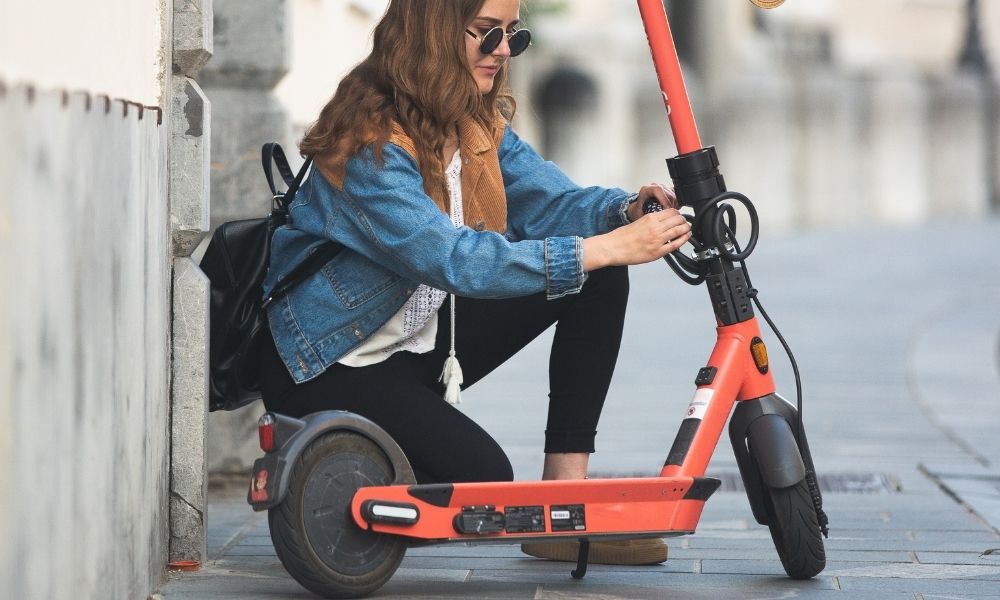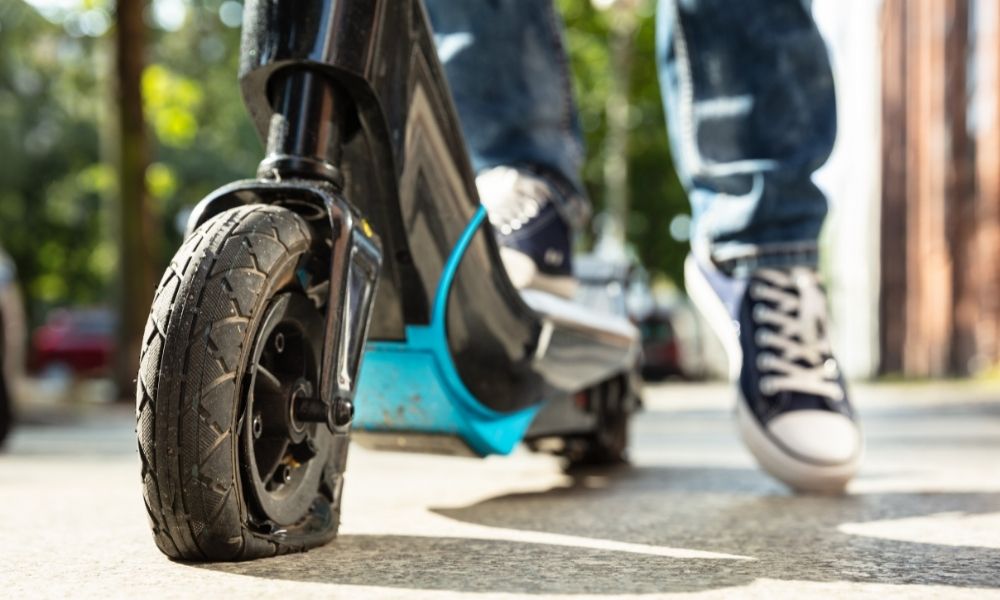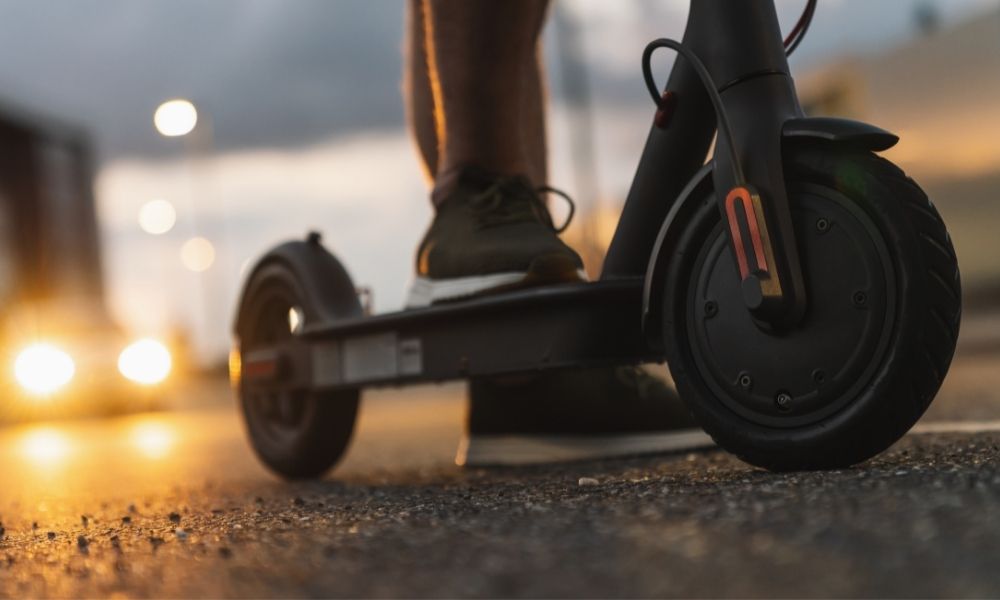I never thought twice about the safety of e-scooters until I crashed on one.
One minute I was cruising along; the next I was on the footpath clutching my knee.
At the hospital, a nurse came around with a clipboard and took details of my incident. She was collecting data on scooter injuries—I was the third person she’d seen that morning.
Over the coming days, an MRI confirmed the worst. I had torn my Anterior Cruciate Ligament (ACL) and would need a knee reconstruction. Recovery time: nine months.
I contacted the e-scooter rental company and reported what had happened.
How I had been riding along at night when I hit something on the footpath. The scooter stopped. I didn’t. I was thrown clear, landing awkwardly on my knee.
“We are sorry to hear of your experience”, came back the reply, along with a request for details of the accident so they could investigate.
One week later their findings were in. They had concluded the e-scooter accident was “user error”.
“We regret we are unable to pay this loss”.
A convenient way to get around had ended up with a hefty price tag.
Fun, affordable and efficient transport

An e-scooter (electric scooter) is a two-wheeled, stand-up scooter powered by an electric motor. These devices have exploded in popularity—they currently over 250,000 e-scooters and other personal mobility devices (such as e-skateboards or Segways) in Australia.
Most are privately owned, but it’s brightly coloured rental e-scooters around Australian cities that have become one of the most visible signs of the e-scooter revolution. There are expected to be 20,000 such rental e-scooters in Australia by the end of 2022.
It’s no wonder e-scooters are so popular with riders.
They are fun to ride, cheap to run (as little as $0.01 per km), produce negligible emissions (they can be up to 1000% more efficient than a combustion engine) and fulfil an important role in the transport network.
E-scooters are a particularly effective ‘last mile’ option—the final part of a journey which is often unserved by public transport, such as the five-minute walk from the bus stop to the office.
They can also reduce traffic congestion, with Brisbane City Council data showing that 30-50% of e-scooter and e-bike trips would otherwise have been taken by car.
But safety questions remain

For all their benefits, increased e-scooter usage has come with an unwanted side-effect: a “clear and disproportionate” increase in accidents as e-scooter numbers grow.
In April, a Brisbane man died after crashing into a concrete wall on an e-scooter, while in July last year a rider was killed after losing control and hitting a pole.
Pedestrians too have been seriously injured after being hit by e-scooters, while poorly parked devices can pose trip hazards—particularly for people with vision-impairments.
Data collated by the Jamieson Trauma Institute (JTI) recorded almost 800 hospitalisations in the 18 months to May 2020 across three Brisbane hospitals. Of these, 624 injuries occurred on hired e-scooters, with half of riders not wearing helmets.
The head, upper extremities and lower extremities are particularly vulnerable to injury in e-scooter accidents. One German study found that more than half of those admitted to hospital with e-scooter injuries suffered trauma to the head or face.
The majority of e-scooter accidents occur on footpaths, while fatal accidents are more likely to involve cars. Major causes of crashes include losing control due to not paying attention, single-handed riding, kerb jumping, inexperience, or speed.
Inherent design characteristics (small tyres, high centre of gravity), patchy helmet use (particularly on rental scooters), lack of rider-training or licensing, and excessive alcohol consumption have all been cited as contributing factors behind e-scooter accidents.
An evolving regulatory and insurance landscape
As e-scooters surged in popularity in the late 2010s, many rule-makers were caught off guard and forced to play catch-up. Around the world, e-scooters have been classified as everything from cars to motorbikes to toys.
In Australia, as with other ‘disrupters’ like ride-share platforms, e-scooter rental schemes began to roll out before regulatory frameworks were in place. When Lime scooters first appeared on Brisbane streets in 2018, they did so under a temporary permit.
Legislators have since caught up, with rental e-scooters now legal or being trialled in every state except NSW (where a trial will take place later this year), while privately owned scooters can be ridden in certain public places in most states or territories.
Rules vary from state to state. In Queensland, riders over 16 (or 12 under adult supervision) can ride in public including on roads and ‘road related areas’ at up to 25km/h. Devices don’t need to be registered and licenses aren’t required, however riders must wear a helmet.
Despite the growing popularity of e-scooters, liability protections are still in their infancy. There is no compulsory insurance third-party insurance for private riders, while coverage varies for riders of rental devices.
Some e-scooters rental companies now offer rider insurance for injuries, loss or damage suffered in an accident (providing the rider wasn’t negligent). Common law claims may also be possible in instances where the rider isn’t negligent.
But what if you crash into a pedestrian or damage property?
Last year, Neuron introduced third-party rider-insurance, something Brisbane’s other hire operator Beam has subsequently introduced. However, as with rider insurance, riders should carefully consult their e-scooter company terms and conditions to assess its coverage.
Private scooter riders operate in a much looser regulatory framework–because they can’t be registered like a car, there is no requirement for them to have any form of insurance at all.
Not so dangerous after-all?

What if there’s a way to have the e-scooter cake and eat it? To reap the benefits of micro-mobility without the risk.
It might be possible.
Research out of Sweden’s Chalmers University of Technology suggests e-scooters are not necessarily any more dangerous than bicycles—which benefit from "established social norms, regulations, and infrastructure" which e-scooters don’t yet have.
The challenge then becomes how to better integrate personal mobility devices into transport systems—something which is already happening.
In Queensland, e-scooter rules have recently been fine-tuned to allow cars, pedestrians and scooters to better co-exist. Footpath speed limits have been dropped to 12km/h, signage and road markings improved, and police given greater enforcement capabilities.
At a city level, QUT’s Centre for Accident Research and Road Safety calls on operating environments to be designed to ensure sufficient separation from high-speed cars while minimising risks to cyclists or pedestrians.
Technology can also help. In November, Neuron announced it would trial high-accuracy location technology (HALT), rapid geofence detection (RGD) and dangerous riding detection (DRD) in cities including Brisbane. These systems allow Neuron to better track rider movement, enforce speed limits, and control erratic behaviour.
Of course, accidents can never be avoided entirely, and submissions to the National Transport Commission (NTC) have called for mandatory comprehensive insurance for e-scooters.
Together, sensible regulation, smart planning, technological innovation, and wider insurance coverage could further deliver the benefits of e-scooters—with fewer stories like mine.
